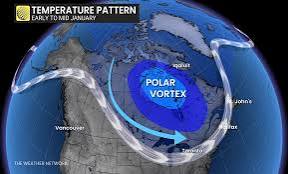Polar Vortex Strikes! How the Arctic Blast Will Freeze January 2025
The Quadrantid meteor shower, renowned for its intensity and brevity, is set to grace the night sky as the new year unfolds. Unlike many meteor showers that extend over several days, the Quadrantids have a sharply defined peak lasting only about six hours, making precise timing crucial for observers.

Origin and Characteristics
The Quadrantids originate from the asteroid 2003 EH1, a celestial body that may be a dormant comet. As Earth traverses the dense stream of debris shed by this asteroid, particles enter our atmosphere at high velocities, burning up and creating bright meteors. The shower is noted for producing up to 120 meteors per hour under optimal conditions, with some meteors manifesting as bright fireballs that can light up the sky.
Peak Viewing Time
In 2025, the Quadrantids are expected to peak between 10 a.m. and 1 p.m. Eastern Time on January 3. This timing favors observers in the Pacific region; however, enthusiasts in other parts of the world can still enjoy the spectacle by planning their viewing during the predawn hours of January 3, when meteor activity is typically heightened.
Optimal Viewing Conditions
For the best viewing experience, consider the following tips:
•Location: Choose a dark area away from urban light pollution. Rural settings or designated dark-sky parks offer ideal conditions.
•Timing: Plan to observe during the early morning hours before dawn on January 3, when the sky is at its darkest, and meteor activity is near its peak.
•Preparation: Allow your eyes to adjust to the darkness for at least 20 minutes. Avoid looking at bright screens or using flashlights during this period.
•Equipment: No special equipment is necessary; meteors are best viewed with the naked eye. However, bringing a reclining chair or blanket can enhance comfort during extended viewing.
The Quadrantids’ radiant point is located near the constellation Boötes, close to the Big Dipper’s handle. While meteors will appear to emanate from this area, they can streak across any part of the sky. It’s advisable to scan a broad portion of the sky rather than focusing solely on the radiant point.


Comments are closed, but trackbacks and pingbacks are open.